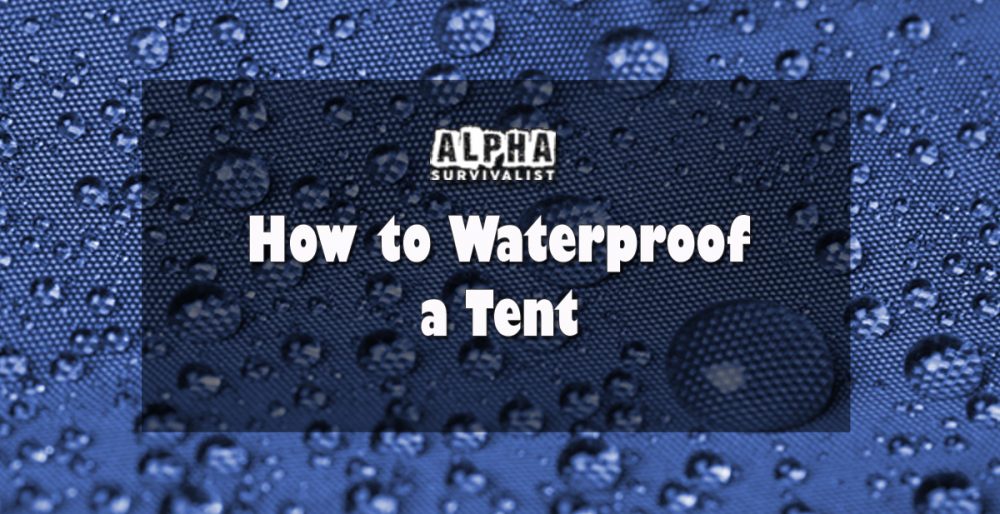Whether you are using your cold weather tent in the summer or in the winter, the one thing you definitely don’t want to hear is the sound of water dripping through the fabric of your tent.
While any tent, even the sturdiest, most modern gear, has areas that are sensitive and can let water through more easily, you can easily ensure your tent is thoroughly waterproofed – here are a few tips that will help you achieve a stress free and bone dry camp out.
Waterproofing the Seams
The needle used during the tent manufacturing process will inevitably leave holes in the fabric, and holes, no matter how minute they may be, can let in water. This is why the seams of your tent are generally considered to be the area of your tent that is most susceptible to leaks and that’s why they should always be the first areas that you should waterproof.
The best way to waterproof tent seams is to treat them with a sealant.
Look for a suitable seam sealer – hiking and tracking stores sell many great, affordable varieties, but make sure you buy the type that suits your tent material (if you are not sure whether your tent is made from material that has been treated with silicone or with polyurethane, then ask for help at the store or contact your tent manufacturer). When you have the right sealant, proceed as follows:
- Set up your tent and examine all the seals from inside and outside the tent;
- Remove all impurities and prepare the seams with some rubbing alcohol;
- Apply the seam sealant on all seams on the tent;
- Keep the tent pitched until the sealant dries completely.
Handling the Polyurethane Coating
Most tents have rain flies or floors that are coated with polyurethane. The material is resistant, but excessive wear and tear can cause the layer to crack and flake, in which case you will need to replace it to maintain your tent’s resistance to water.
Check the parts that have urethane coating – if you see damage, remove the old coating by soaking the damaged area for a few hours in warm soapy water and then scrub gently with an abrasive sponge and some rubbing alcohol until it is all removed, then apply the tent sealant of the right type (suitable for the material that the treated area is made from).
Refreshing the Water-Repellent Coating
Many parts of modern tents, especially the surfaces that come into direct contact with water, are treated with durable water repellent coating, also called DWR. If water no longer beads on the surfaces of the tent that have been treated with DWR, it means that the coating lost its water-repellent qualities and it needs to be refreshed. Here is how:
- Set up your tent and spray some water on the surfaces that you want to treat;
- Get a suitable DWR waterproofing spray and apply a generous amount of it on the tent;
- Remove any excess DWR with a sponge;
- Wait until the treated surfaces dry completely – folding and packing away your tent while it is still damp might not only compromise the efficiency of your waterproofing efforts, but might also contribute to the appearance of mold and mildew on the tent.
Final Thoughts
If you are planning a longer trip to a region that gets lots of rain, do not skip any of the above phases – take the time to waterproof your tent completely, the seams, the DWR and the polyurethane parts included, because that is the only way to make sure that you as well as the belongings that you keep inside your tent will be safe from the rain and from moisture during the trip.
Tent Related Posts:
- Best Cold Weather Tents for Under $200
- How to Clean a Tent that Smells
- How to Fix a Tent Zipper
- How to Insulate a Tent for Winter Camping
- How to Repair a Torn Tent
- How to Waterproof a Tent
- How to Stay Warm in a Tent in Winter
How to Waterproof a Tent – Pin


